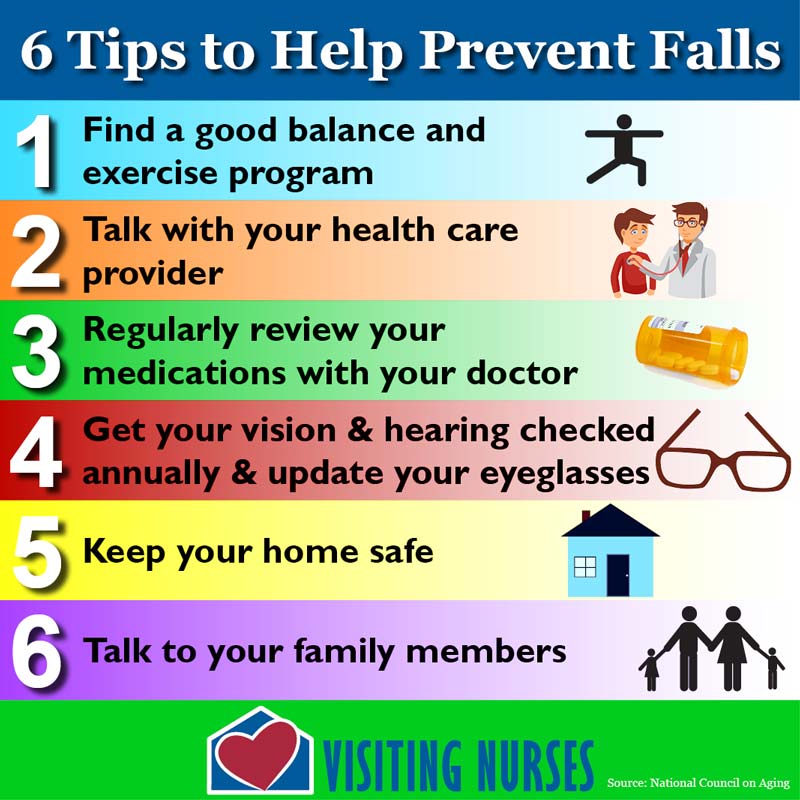September 20th kicks off National Fall Prevention Week. While our VNA team frequently works with individuals after a fall, we want to raise awareness on how to prevent a fall. We use “6 Tips to Help Prevent Falls” from the National Council on Aging to educate our patients in their home. As a physical therapist working in home health, I spend a lot of time on the balance and physical exercise portion. However, I also find that the 5th tip, keeping your home safe, is one of the easiest things to focus on and change, but many people do not correct potentially dangerous situations.
Frequently, individuals will get used to their surroundings and not be aware of the potential dangers. Having an individual from outside the home come in and look at your environment with fresh eyes can be very beneficial. This can be a trained therapist or even a trusted family member or friend. Just be open to their suggestions and willing to make the recommended modifications. If you would like help with making your home safer, VNA's Home Safety Evaluation program may be perfect for you. Learn more about it by clicking here.

First, look at your floors and your typical pathways.
You need to be able to freely walk throughout the house and easily access frequently used items. Are the floors free of clutter? Is the furniture placed too close together or do you have too many pieces of furniture? If your house has a lot of rugs, you might even think about removing them as they can be a trip hazard. Also, look for cords that cross your pathway and consider running those along the wall for a safer environment. Watch out for slippery surfaces, like in the bathroom. While you may be tempted to use a decorative rug in the bathroom, make sure the rug is not too thick or fluffy. If the rug slides on the floor at all, it can be very dangerous. If you are determined to have a rug on a slick floor, consider using rug anchors/grippers to secure the rug to the floor.
Second, evaluate your routine.
When you get dressed, it is smart to sit on a solid chair with arms versus the edge of your bed with slippery surfaces like sheets or a blanket. The usage of a light in the bathroom at night may prevent a fall and probably a stubbed toe or two. Making sure you have the needed items within arm’s reach will also save you some headache and maybe a bruise or broken bone.
Finally, have a plan.
If you were to fall, how will you notify someone? Do you have a way to keep a charged cell phone with you at all times? Do you have access to a personal emergency response system? There are others out there, but VNA offers CareLink, which is a hands-free, two-way call system. You do not have to be a patient with VNA to access that service.
Being aware of your environment and making it as safe as possible can and will prevent falls.
Involving your family or loved one in this process will let them know you are taking control of your environment and making it as safe as possible. Plus, they may be able to assist you with physically changing your set up. If you want to remain at home, taking these steps will help you accomplish that goal. VNA is always here to help, but if you can avoid falling and therefore avoid having us in your home, we support that as well!
Cassidy Carter
Doctorate of Physical Therapy
Douglas County Visiting Nurses Association